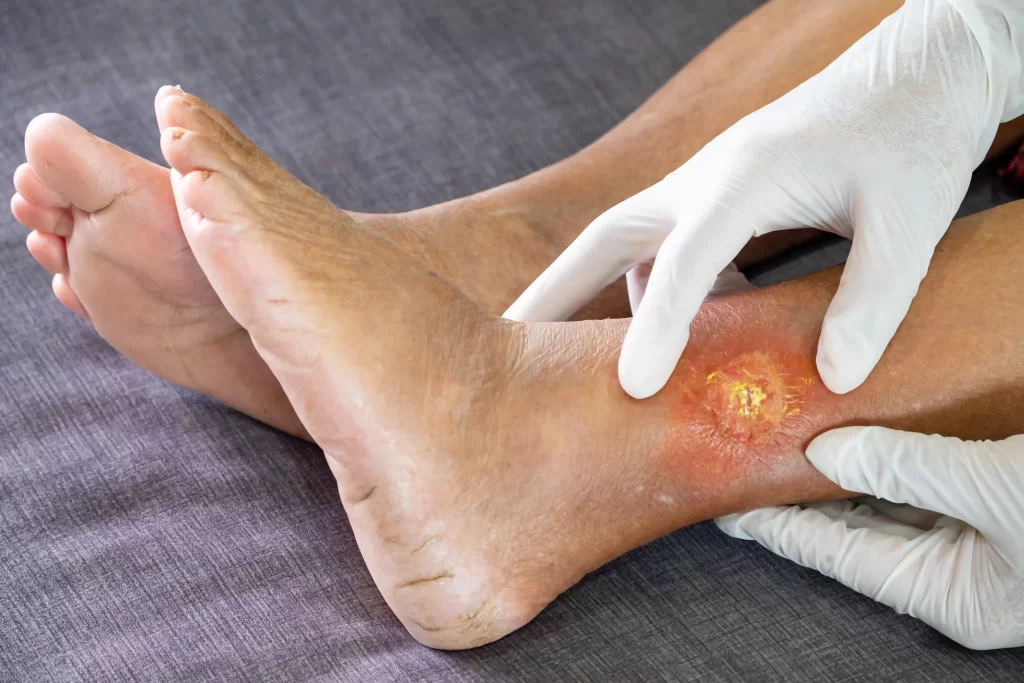Foot wounds require close monitoring, especially for individuals with diabetes, neuropathy, or circulation issues. Many patients in coastal communities report minor cuts, blisters, or pressure spots that seem harmless at first but eventually develop into serious ulcers. When someone seeks wound care in st pete, specialists often explain that early warning signs appear long before a wound becomes dangerous. These red flags can be subtle, and many patients overlook them because they expect natural healing. Understanding these early indicators helps prevent complications, infections, and the risk of long-term tissue damage. Being aware of how a wound should normally progress versus how a problematic wound behaves is essential for anyone who wants to protect their mobility and long-term foot health.
Why Early Detection Matters?
A foot wound that doesn’t heal properly can worsen rapidly. St. Petersburg residents often spend time walking on warm pavement, beaches, and uneven surfaces. Combine that with conditions like neuropathy or poor circulation, and small injuries can turn into major medical concerns. Early detection allows providers to treat the wound before it deepens, becomes infected, or spreads to surrounding tissue.
Sign One: Persistent or Increasing Pain
Pain is not always expected in individuals with neuropathy, but in those who do feel sensation, persistent or increasing discomfort is often the first sign that something is wrong. A wound should gradually become less painful over time. If pain intensifies, spreads, or feels different than before, the wound may be worsening or becoming infected.
For example, a patient who regularly walks along Shore Acres might notice a blister after wearing tight shoes. If the blister becomes painful several days later instead of improving, that change can be a warning signal.
Sign Two: Redness That Spreads or Deepens in Color
A small amount of redness around a new wound is normal. Redness that expands, becomes more intense, or feels warm to the touch often indicates inflammation or infection. Specialists in St. Pete commonly see this pattern in wounds exposed to ocean water, sand, or friction from sandals.
If a wound begins developing streaks of red going up the foot or leg, this may require immediate medical attention. These streaks can indicate that infection is advancing.
Sign Three: Unusual or Persistent Swelling
Swelling should decrease over the course of normal healing. If it stays the same or gets worse, something is interfering with recovery. Swelling may suggest circulation difficulties, fluid buildup, or infection.
A practical scenario includes a patient from Gulfport who steps on a sharp shell. The wound appears minor initially, but over the next several days swelling increases, making shoes uncomfortable. That change in swelling is a key clue that the wound is not healing correctly.
Sign Four: Drainage That Looks or Smells Abnormal
Healthy wounds may drain slightly, but the fluid should be clear or pale yellow. Cloudy, green, or foul-smelling drainage is one of the most important early signs of infection.
Types of drainage that raise concern include:
- Thick or discolored fluid
• Sudden increase in drainage volume
• Strong odor
• Bloody or purulent discharge
In St. Petersburg, moisture and heat can make infected wounds progress quickly, so drainage changes should never be ignored.
Sign Five: The Wound Stops Shrinking or Suddenly Gets Larger
A healing wound should gradually reduce in size. If weeks go by with no noticeable change, the wound may have stalled. Conversely, if it enlarges, deepens, or begins tunneling below the skin, it may be transitioning into a chronic ulcer.
An example would be someone with diabetes who notices a callus under their foot. When the callus breaks open, the wound seems small. But after several days of walking, the wound becomes wider or deeper rather than closing. That is a classic sign the wound is deteriorating.
Sign Six: Hard or Dark Tissue Appears
Healthy tissue usually looks pink or slightly red. Hard, dry, or darkened tissue (including black or brown areas) may indicate necrosis, meaning the skin or underlying tissue is dying. This can happen when blood flow is insufficient or when pressure is constantly applied to the area.
A patient living near Treasure Island might develop a dark patch around a wound after spending long days on their feet at work. Necrotic tissue requires medical removal and should be evaluated by a specialist.
Sign Seven: Fever or Feeling Unwell
A non-healing wound can lead to systemic infection. If a person with a foot wound develops fever, chills, fatigue, or generally feels sick, it may mean the infection has moved beyond the surface. This requires immediate medical evaluation.
Sign Eight: Numbness or Loss of Sensation Around the Wound
A decrease in sensation may indicate worsening nerve involvement or further tissue compromise. For individuals with neuropathy, this can be especially troubling because new symptoms often go unnoticed. If numbness spreads or the wound feels “different,” this change can be a red flag.
When to Seek Professional Help?
If any of the warning signs above appear, it is important to seek care promptly. Wounds that fail to improve within a week or two should be evaluated by a podiatric or wound care specialist. Early treatment can prevent infections, deeper ulcer formation, and long-term complications that may threaten mobility.
Helpful Product for Reducing Friction and Pressure
Many early foot wounds begin as friction spots or pressure points. One practical tool that can help protect vulnerable areas is adhesive moleskin padding, commonly used to reduce rubbing inside shoes and prevent new sores.







